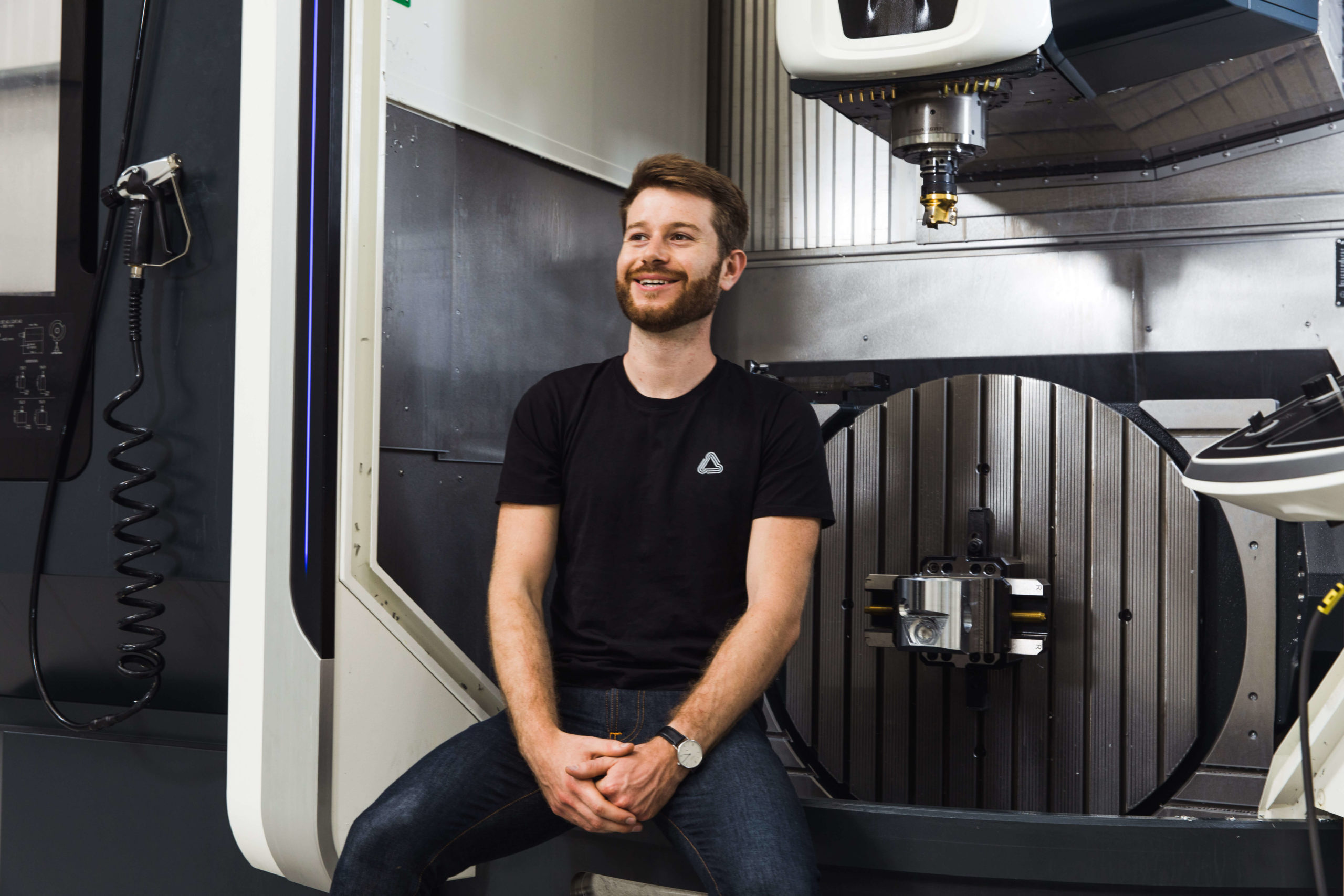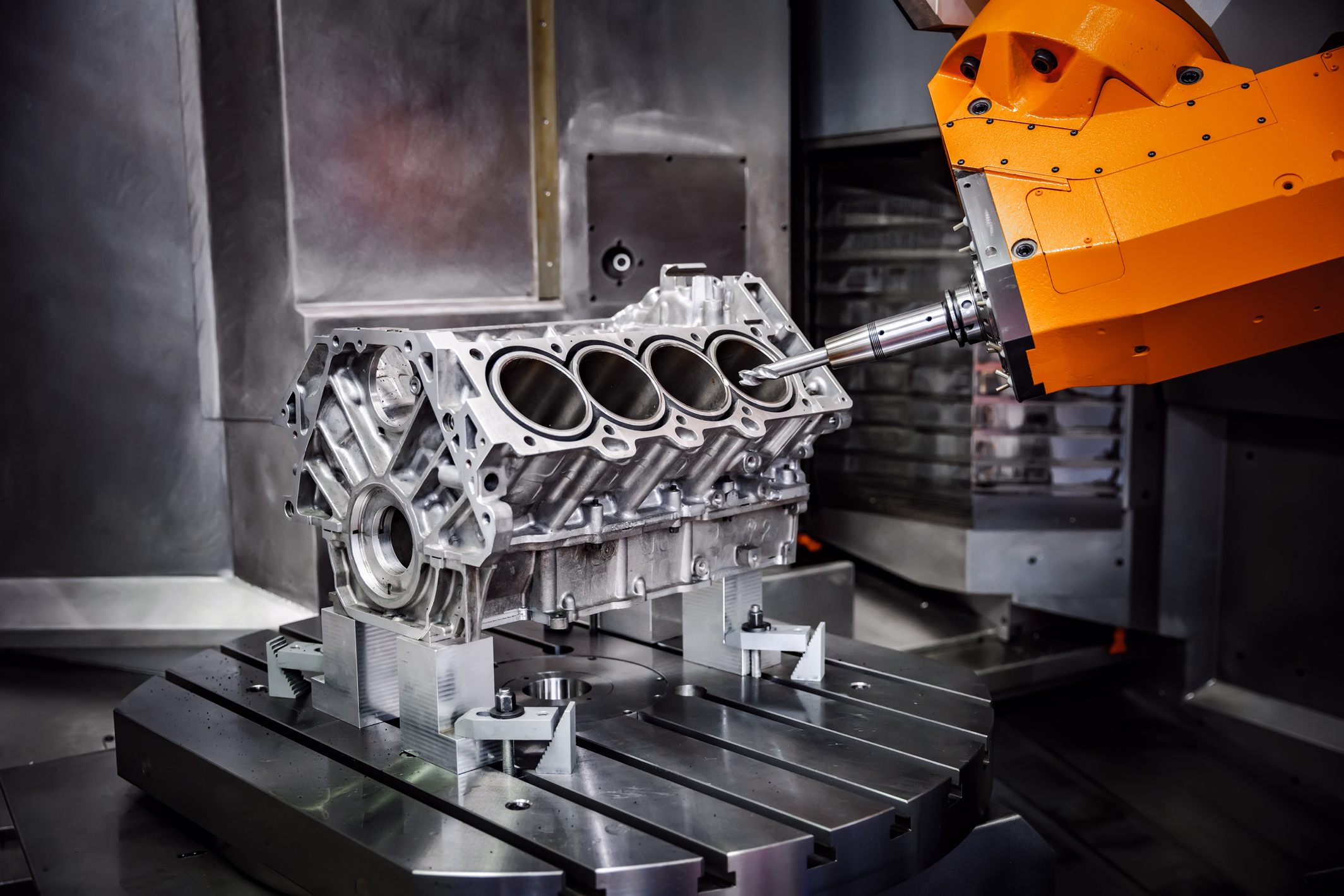
This interview first appeared in the June 2022 UBS Private Markets and Venture Capital Report.
CloudNC mission is to automate manufacturing and create a clean and sustainable industrial revolution that accelerates humanity. They’re building the autonomous factories of the future to make manufacturing 10x more efficient, sustainable and faster than anything we see today. Theo’s amazing work and unique business model received Forbes’s recognition when he became part of the “30 Under 30 Europe 2019 Manufacturing & Industry” list.
Can you please tell us a bit about CloudNC and the problem that you are solving in manufacturing?
The last industrial revolution was an automation revolution – for the first time humanity had use of powerful machines that could reliably make the same thing hundreds or thousands of times. Machines have become automatic, but the catch is that telling them how to do new things is not. A person is always needed to provide the machine new instructions to change production. This is the single largest problem in manufacturing, and solving it is CloudNC’s mission.
The next industrial revolution is an autonomy revolution – giving machines the ability to reprogram themselves. It’s the difference between the present of giving a person a 3D file and then they go away and figure out how to use the machine to make it, versus giving the 3D file directly to the machine and it already knows how to make it.
Our initial focus has been autonomising CNC machining, a $168B market that produces the precision metal and plastic parts that are needed for, well, virtually every kind of manufactured product. In a nutshell, you start with solid blocks of metal, then carve them into useful shapes using powerful robot arms with spinning cutting tools at their tips. I recommend looking it up, it’s mesmerising to watch.

In order to solve these problems, CloudNC has done something that no-one in the world has been able to do so far. Can you tell us what that is and why no one before you could achieve it?
What we can do that is different is take a 3D file, and our software can turn that directly into manufacturing instructions for the machinery and overall factory. We’ve eliminated human decision making from manufacturing. As to how we got here, as with most successful startups the answer is part luck and part execution:
The luck part is, back in 2015 we were in the right place at the right time. Cloud computing was just barely becoming powerful enough, and venture capital had just started taking an interest in deep tech and Industry 4.0. My co-founder and I knew enough about the problem to be dangerous, but not enough to be put off by the immense scale of the software challenge, as others had been.
On the execution side, we quickly built one of the best software engineering teams assembled to tackle a manufacturing problem. Delivering autonomous manufacturing is, from a software perspective, simply phenomenally hard – there are trillions of potential component geometries, and trillions of ways of making any one of them with one of these machines, and you must deal with the physics and variability of the real world. A challenge like this needs the attention of large numbers of world-class software engineers over years in order to get traction on the problem.
It also requires a full-stack approach – an autonomous factory is fundamentally different from a traditional factory, so we have to build these ourselves from the ground up. There are simply too many variables in trying to support all of the hundreds of thousands of existing factories out there, and this is one of the factors that has prevented the software giants of the space from tackling the problem – they’re not willing to build factories, which would see them competing with their own customers. Our R&D factory, where we are developing our copy-pastable autonomous factory blueprint, is located in the UK in Essex.
Most people think technology in manufacturing means automation, for you it means autonomous - what does autonomous manufacturing mean for the future?
Until now, manufacturing has been inefficient, expensive, unreliable, slow and non-scalable. Manufacturing of the future is the opposite. If you can make machines autonomous, it becomes possible to make overall factories autonomous and copy- pastable, which unlocks end-to-end autonomous reconfigurable supply chains.
Let’s use an example to expose why this would be exciting. The world recently found that it needed millions of additional ventilators, blood oxygenation machines, decontamination devices etc. CloudNC had exposure to the UK effort, and it was a mess. Despite incredible force of will, building the new supply chain took months before large quantities started rolling off the production lines. The bottleneck was human interaction and decision-making.
If such a thing happens 30 years from now, here’s how it will go down. An urgent global need is identified for products, and the 3D files for these are shared with a network of autonomous factories. These assembly factories automatically query the global network of various specialised autonomous factories for capacity to produce the sub-assemblies and components required, then order them automatically. A new, product-specific supply chain gets to work instantly, and the products are rolling off the final line in tens of thousands within days. There are tremendous technical challenges that need to be overcome in order to realise this future, but is it a case of when, not if.

What is CloudNC doing to make manufacturing more sustainable?
Autonomous manufacturing is, by default, more sustainable. 10x more productivity means 10% the quantity of machinery that needs to be produced and a vast reduction in carbon footprint. More efficient machining means less consumption of power per unit produced, and less scrap means less wasted production energy. The list goes on. Our back-of- envelope math suggested a 1-2% reduction in global power consumption could be achieved by bringing autonomy to all CNC machines. There’s probably some big errors in that calculation, but I doubt we’re more than an order of magnitude out.
What person has inspired you to become an entrepreneur?
For me, engineering mixed with entrepreneurship was always the default path. I was disassembling household items from an early age, and started my first business at 15, selling custom built gaming PCs just-in-time from my bedroom and dropshipping hardware on Ebay. I started reading books on famous entrepreneurs much later, and I think the right move is to learn from the best of each of them and incorporate that into your own personal style. I particularly admire what Elon Musk and Jeff Bezos have built, and there are many lessons drawn from those journeys that you’ll find as embedded behaviours in CloudNC. I’d caution entrepreneurs from trying to directly replicate e.g. Amazon’s culture without acknowledging that these companies were built in a different time with different expectations. If Amazon had started up today, I think its culture would bleed talent, but back in the 90’s people had different expectations.




